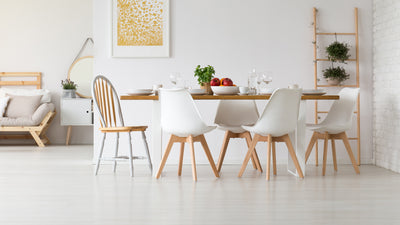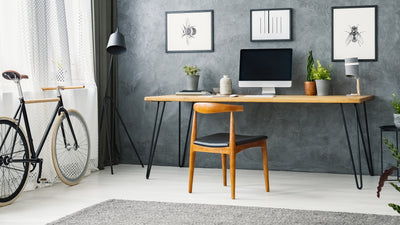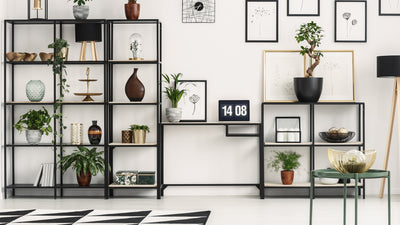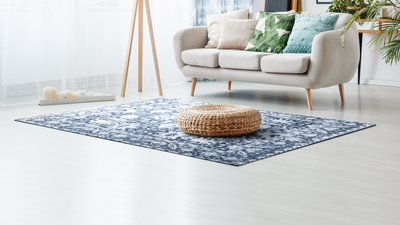A Brief History of Australian Architecture
Australia has some of the most beautiful untouched environments in the entire world, making it a great place for inspirational design.
At Artiss, we're dedicated to bringing you not just artistic interior design pieces, but furniture that looks at home in your typical Aussie home. As we like to say, we make furniture for real Aussie homes, not fancy showrooms. We thought it would be fun to explore Australian residential architectural styles through time to get a sense of who we are and where we've come from.
Pre-colonial architecture
Prior to British settlement, Australian land was cared for by Indigenous Australians. Unfortunately, due to colonisation we have limited records of pre-colonial architecture and design, though we have been able to preserve some areas such as Budj Bim in Gunditjmara land. In the modern-day, we are seeing a resurgence in Aboriginal art and design which has been dubbed the most exciting contemporary art form of the 20th century.
Colonial architecture
Early architects in Australia were British and European. For the first settlers, at least, materials were scarce. The only roofing materials available were bark and reeds, expanding to corrugated iron once it could be imported. Another important material was clay, usually light in colour. Verandas were commonplace. Overall, houses were built using what was immediately available and dictated by the environment, at least until the importation of brick and glass was more readily available. Great architectural examples of this period include Captain Kelly’s cottage in Tasmania and the Elizabeth Bay House in Sydney.

Federation architecture
Federation-era homes drew heavily from English Edwardian, but with a distinct Australian spin (notably with the persistence of the veranda). The style was dubbed ‘Federation’ as it was popularised at the time of Australian Federation. These houses can be identified by red brick exteriors, stained glass, bay windows, slate or terracotta gabled roofs, and long interior corridors. We also developed the Federation bungalow, adapted from the California bungalow, and is commonly made of brick as opposed to the US version made of wood. Around the same time as Federation, other movements arrived on Australian shores, and Australian tastes began to further expand. These movements include Arts and Crafts, an ironically less-decorative style with plain brickwork that was used extensively for government buildings, and Art Deco, which celebrated geometric elements, curved facades and bright colours.

Terraced homes
Often thought of as the quintessential terrace home, still found throughout inner-city Melbourne and Sydney, the Edwardian/Victorian style of architecture developed at a time of Australia's population boom at the turn of the century. Interestingly, the government sought to ban terraced houses in the 1920s because some of the terraced housing areas were seen as slums and crime hotspots. As a result, a lot of terraced housing was reclaimed and turned into flats or otherwise renovated, and the complete rows that remain are heritage listed. Terraced homes have a beautiful but unassuming exterior that may open up to reveal any kind of interior – a twenty-bedroom hostel that retains the original design, or a completely renovated modern style home.

Fibro housing
After World War II, a new and affordable product hit the market – fibro, also known as asbestos cement sheeting. It was a cheap, easy-to-use building material that was well suited to the Australian climate. Unfortunately, it would be a few years before we discovered that asbestos was the cause of many deadly diseases, and fibro would be removed from the market completely by the 1990s. Present-day, it’s not uncommon to still find old fibro houses, but buyer beware – any renovations will have to consider the additional cost of removing the asbestos sheeting.

Apartment living
While ‘vertical living’ is not a new concept (it’s been around since the Romans!) it was not a popular way of living until around the 1960s when apartments became affordable for middle-class buyers. Australia has historically been a country defined by sprawled living and detached homes, with our cities having a fairly low population density in comparison to our overseas neighbours. But, in recent years, we've seen greater demand for higher-density housing influenced by pricing, population growth, and an extended economic boom.

What's next in Australian design?
While experts may disagree on current most popular styles, there are some trends that we've observed:
- Minimalism is incredibly popular, with homeowners ditching interior and exterior clutter in favour of clean lines and function over form.
- Mid-century modern is experiencing a resurgence thanks to pop culture – shows like Mad Men and movies like Once Upon a Time in Hollywood use mid-century modern design in their sets, while The Daily Show guests sit in Eames chairs.
- Australians are more dedicated to sustainability, either adding sustainable features to their property (such as solar) or buying homes made from sustainable materials and/or packaged with these features.
Could you tell by looking at your home which era it may have been built in? Tag us on Instagram, with any honourable mentions to Artiss furniture. We'd love to hear it.









